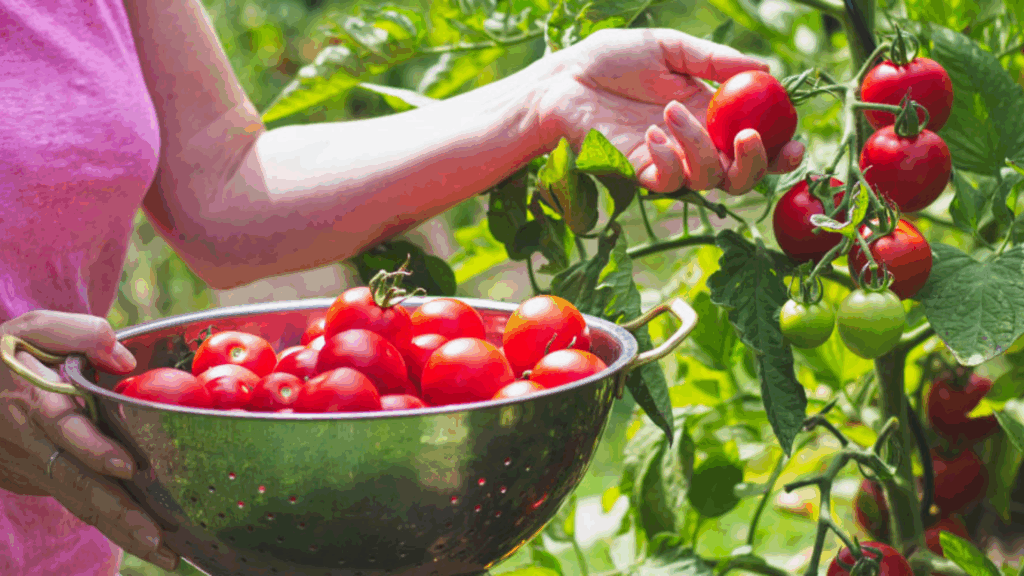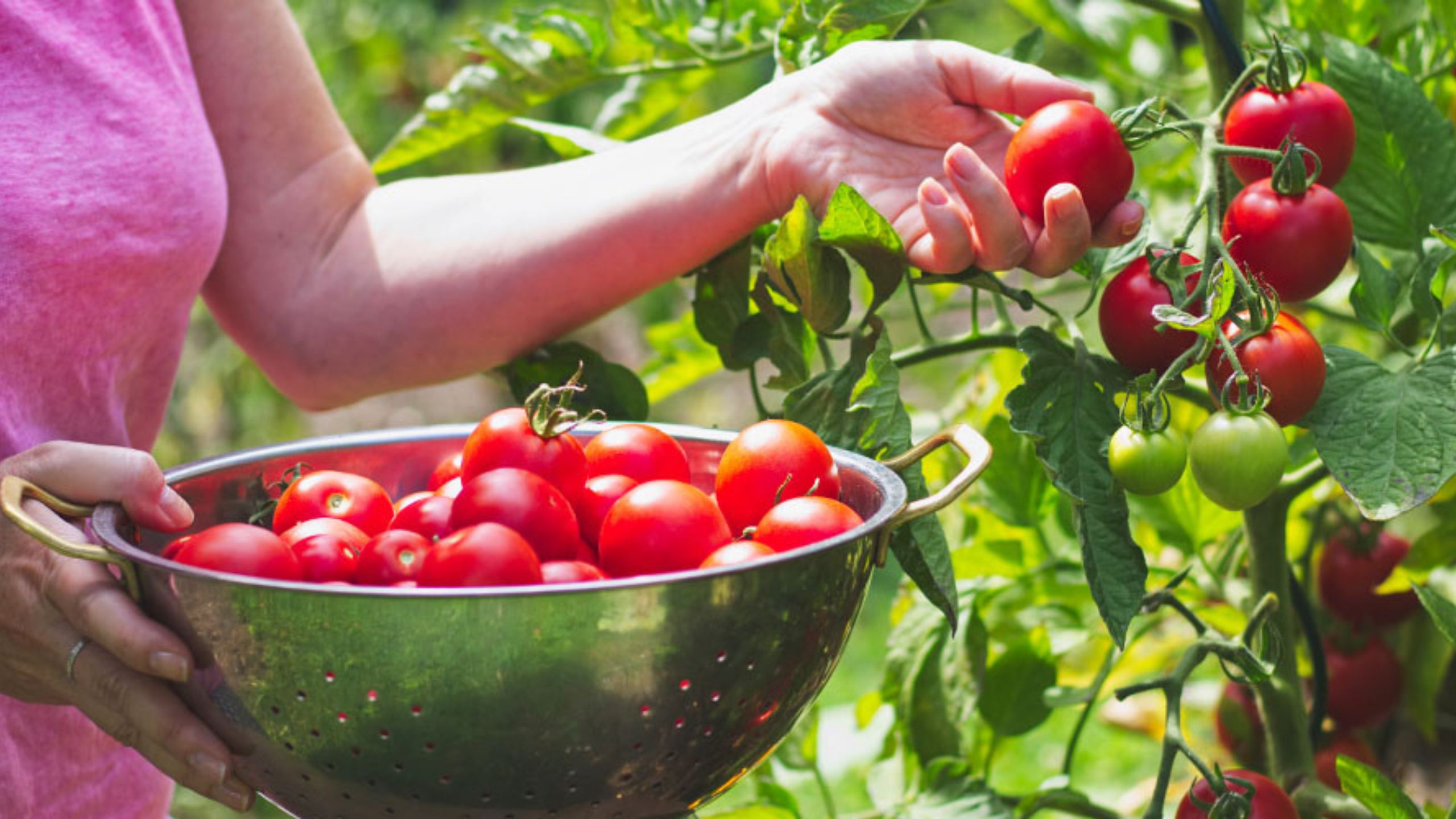Tomatoes are undoubtedly one of the most beloved plants among gardeners around the globe. Their versatility in the kitchen, combined with their vibrant color and flavor, make them a staple in many households. However, despite their popularity, growing tomatoes can sometimes present challenges. If you’re eager to enhance your tomato-growing experience and ensure a plentiful harvest, you’re in the right place! Below, we’ll explore ten invaluable hacks that can transform your tomato plants into robust and productive wonders.
1. Baking Soda for Sweeter Tomatoes
How to Use It:
Sprinkle about one teaspoon of baking soda around the base of each tomato plant, making sure to avoid direct contact with the stem.
Why It Works:
Baking soda effectively reduces soil acidity. This lower acidity level leads to sweeter-tasting tomatoes. It’s important to note that this hack works best in soil that has a pH balance of around 6.0 to 6.8. Be cautious, though—too much baking soda can shift your soil’s pH too far toward alkalinity, which can inhibit nutrient absorption.
2. Epsom Salt for Bigger, Healthier Plants
How to Use It:
Mix one tablespoon of Epsom salt in a gallon of water. You can either spray this solution on the leaves or water the base of your plants with it every two weeks.
Why It Works:
Epsom salt is rich in magnesium and sulfur, both of which are essential for healthy plant growth. Magnesium plays a critical role in chlorophyll production and aids in nutrient absorption, resulting in greener leaves, stronger stems, and increased yields.

3. Banana Peel and Eggshell Fertilizer
How to Use It:
Chop banana peels into small pieces and bury them 2-3 inches deep near the roots of your tomato plants. You can also crush eggshells and mix them into the soil before planting or scatter them around the base of the plants.
Why It Works:
Banana peels are high in potassium and phosphorus, which are vital for fruit development and disease resistance. Eggshells, on the other hand, are an excellent source of calcium, helping to prevent blossom-end rot—a common issue in tomatoes caused by calcium deficiency.
4. Coffee Grounds for a Nitrogen Boost
How to Use It:
Once you’ve finished your coffee, dry the used grounds and sprinkle a thin layer around the base of your tomato plants or mix them into your compost.
Why It Works:
Coffee grounds are a slow-release source of nitrogen, which is crucial for promoting lush, green growth. Additionally, they improve soil texture by adding organic matter. Just make sure to dry the grounds first, as fresh coffee grounds can be quite acidic.
5. Aspirin Spray for Disease Resistance
How to Use It:
Dissolve one uncoated aspirin (325 mg) in a gallon of water and spray this solution on your tomato leaves every 2-3 weeks.
Why It Works:
Aspirin contains salicylic acid, which mimics the plant’s natural defense mechanisms. This boost activates the plant’s immune system, making it more resistant to diseases like blight, powdery mildew, and various bacterial infections. Additionally, studies have indicated that it may help to enhance fruit production!
6. Mulch with Grass Clippings or Straw
How to Use It:
Spread a 2-3 inch layer of mulch—such as straw, shredded leaves, or dry grass clippings—around the base of your tomato plants.
Why It Works:
Mulching helps retain soil moisture, regulate soil temperature, and suppress weed growth. It also prevents soil from splashing onto the leaves, which reduces the risk of fungal diseases like early blight and leaf spot.
7. Companion Planting for Pest Control
How to Use It:
Introduce companion plants like basil, marigolds, garlic, or chives near your tomato plants.
Why It Works:
Basil not only enhances the flavor of tomatoes but also repels pesky insects like aphids and mosquitoes. Marigolds release natural chemicals that deter nematodes and other soil pests, while garlic and chives offer similar protective benefits against fungal infections and insects.
8. Prune and Remove Lower Leaves
How to Use It:
Once your tomato plants reach about 2 feet tall, trim away the bottom 6-8 inches of leaves and any suckers—tiny shoots that grow between the main stem and branches.
Why It Works:
By pruning lower leaves, you improve airflow around the plant. This reduces moisture accumulation, which in turn helps prevent fungal infections like blight and mildew. Plus, pruning suckers directs the plant’s energy toward fruit production instead of excessive foliage.

